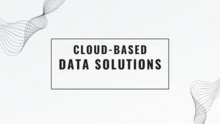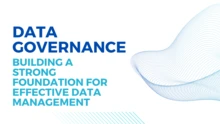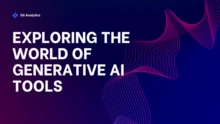
Leaders want to enhance product designs, pricing models, and marketing strategies for business development. They get a competitive edge if they can forecast market trends and potential obstacles to growth. Several predictive tech tools have evolved to address the corporate world’s need for reliable performance and risk estimations. This post will emphasize the role of predictive analytics in optimizing business strategies for long-term success.
What is Predictive Analytics?
Predictive analytics encompasses gathering, preserving, transforming, and documenting enterprise datasets to forecast future events, like outcomes of business decisions. You can evaluate potential market responses to new product launches or upcoming technological industry disruptions using relevant predictive analytics tools. They provide statistical modeling alongside machine learning (ML) features to help managers navigate competitive markets.
For example, those programs will highlight the supply chain risks that could affect your organization in the coming financial year. Accordingly, departmental executives can engage their teams to modify their strategies. Moreover, stakeholders might recalculate expected revenue objectives based on risk assessments powered by predictive and prescriptive analytics.
Modern predictive analytics systems rely on artificial intelligence (AI) to simulate scenarios satisfying user-defined constraints. Multidisciplinary teams of data analysts and business strategists can leverage AI-based scenario analyses to reconceptualize quarterly goals and schedules. They can prepare for potential business disruptions using predictive analytics and insights.
The Role of Predictive Analytics in Optimizing Modern Business Strategies
1| Predicting Customer Behavior
How will your customers respond to a modified product design? What will they prioritize before placing an order or booking an appointment? Brands utilize predictive analytics consulting to answer these questions. They also extract insights that help differentiate brand loyalists from frequent brand switchers.
Consider declining engagement metrics. If you witness this situation, some clients are likely to quit and go to your competitors. You must develop independent customer retention methods to keep consumers engaged. Therefore, behavioral predictions assist in improving customer relationship management strategies.
2| Upgrading Products and Services
You want to monitor how a product feature’s popularity rises and falls to make reasonable adjustments to future releases. Besides, experimenting with innovative product concepts using scenario-based feasibility assessments can give you a realistic overview of good vs. bad ideas.
Accordingly, predictive analytics assists in optimizing product management strategies, enabling a business to focus its resources on the most promising innovations in production and service modules.
3| Improving Supply Chain Management
Socioeconomic instability in a country can hinder transportation and trade ecosystems. Moreover, extensive disruption of web connectivity, piracy, illegitimate distribution channels, and suppliers’ exploitative labor practices threaten your supply chains and brand reputation.
Managers must foresee supply chain risks and prepare alternative strategies to ensure consistent resource availability. Predictive analytics can perform related risk inspections. Your team might use a customized predictive model to help simulate multiple supply management roadmaps based on delivery schedule requirements, geopolitical constraints, and import-export costs.
Predicative Analytics Techniques for Business Strategies
1| Linear Regression
Analysts use it to study a dependent variable resulting from the relationship between independent variables. It is a straightforward predictive analysis methodology, making it popular among stakeholders in estimation and preliminary risk management.
2| Random Forest
A random forest can manage regression and categorization activities based on the significance of each variable. Additionally, you will witness multiple decision trees before obtaining their superimposed version. You can focus on the averaged version of those decision trees to solve regression problems. On the other hand, analysts must use the mode to tackle classification problems.
3| Naïve Bayes
This approach to predictive analytics relies on assumptions inspired by the most likely outcomes. As a result, it holds that no variables in the analysis have a functioning relationship with other variables. Later, you will count the re-occurrence of attributes per class. For instance, you can observe an object in the sky and conclude it is a bird because you have witnessed a flying bird’s attributes or behavior since childhood. Likewise, Naïve Bayes will iterate attributes to identify the most likely scenarios.
4| K-Means
It is an iterative clustering method of predictive insight extraction. A K cluster will compartmentalize dataset elements based on closeness to the mean. The members or data points in a K cluster exhibit identical properties. Consider market segmentation predictions. You assign consumer cohorts who are more likely to have similar preferences and purchasing histories.
5| Gradient Boosted Model
The gradient-boosted technique relies on creating multiple decision trees so that each new tree will reduce errors in preceding decision trees. Therefore, companies can have analysts utilize multiple base estimations and boost the accuracy of predictive analytics.
Conclusion
Global corporations want to mitigate risks associated with failures in new product launch initiatives. So, they want predictive analytics strategies to help uncover ever-evolving customer expectations and assist business leaders in optimizing pre-launch marketing methods.
Aside from simulating consumption tendencies, predictive analytical models can enhance supply chain management and product innovation strategies. These algorithms also leverage advanced statistical approaches and machine learning systems for outcome estimations. So, leaders can streamline risk management and scheduling tasks for competitive advantages.












